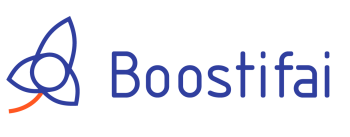Overview
Introduction to ChatGPT
ChatGPT is an advanced natural language processing model developed by OpenAI. It is designed to generate human-like responses in conversational settings. By leveraging the power of deep learning, ChatGPT has the ability to understand and respond to a wide range of user inputs. With its flexibility and versatility, ChatGPT can be applied to various domains, including customer support, virtual assistants, and content creation. This article provides an overview of ChatGPT, highlighting its benefits and potential applications.
Benefits of using ChatGPT
ChatGPT offers several benefits that make it a valuable tool for various applications. Firstly, it provides conversational AI capabilities, allowing developers to build interactive chatbots and virtual assistants. This enables businesses to enhance customer support, automate repetitive tasks, and improve user engagement. Secondly, ChatGPT is highly flexible and customizable, allowing developers to fine-tune it for specific tasks and domains. This makes it suitable for a wide range of applications, from customer service to content generation. Lastly, ChatGPT is easy to use and requires minimal coding knowledge, making it accessible to both developers and non-technical users. Overall, ChatGPT empowers users to create intelligent and dynamic conversational experiences, revolutionizing the way we interact with AI.
Applications of ChatGPT
ChatGPT has a wide range of applications across various industries. Here are some key areas where ChatGPT can be used:
- Customer Support: ChatGPT can be used to provide automated customer support, answering frequently asked questions and resolving common issues.
- Virtual Assistants: ChatGPT can act as virtual assistants, helping users with tasks such as scheduling appointments, setting reminders, and providing information.
- Content Generation: ChatGPT can generate content for blogs, articles, and social media posts, saving time and effort for content creators.
- Language Translation: ChatGPT can be used for language translation, enabling communication between individuals who speak different languages.
These are just a few examples of how ChatGPT can be utilized in various domains, showcasing its versatility and potential.
Getting Started with ChatGPT

Setting up the development environment
To get started with ChatGPT, you need to set up your development environment. Here are the steps to follow:
- Install Python and the required libraries.
- Create a virtual environment for your project.
- Install the OpenAI Python package.
- Set up your OpenAI API credentials.
Once you have completed these steps, you will be ready to start building your own chatbot using ChatGPT. Remember to refer to the official documentation for detailed instructions on each step.
Understanding the ChatGPT API
The ChatGPT API provides developers with a powerful interface to interact with the ChatGPT model. It allows users to send a series of messages as input and receive a model-generated message as output. The API supports various message formats, including system, user, and assistant messages, enabling developers to have more control over the conversation flow. By understanding the ChatGPT API, developers can leverage its capabilities to create dynamic and interactive chatbots.
Creating a basic chatbot using ChatGPT
To create a basic chatbot using ChatGPT, you need to follow a few simple steps:
- Setting up the development environment: Install the necessary libraries and tools to work with ChatGPT.
- Understanding the ChatGPT API: Familiarize yourself with the API documentation to understand how to interact with ChatGPT.
- Defining chatbot behavior: Specify the prompts and guidelines for the chatbot to generate meaningful responses.
Once you have completed these steps, you will have a basic chatbot up and running using ChatGPT. It's a great way to get started with building conversational AI applications.
Advanced Techniques in ChatGPT

Fine-tuning ChatGPT for specific tasks
Fine-tuning ChatGPT allows developers to adapt the model to perform specific tasks with higher accuracy and efficiency. By providing domain-specific data and training the model on it, developers can enhance the chatbot's performance in areas such as customer support, content generation, and language translation. Fine-tuning also enables the chatbot to understand and respond to specialized vocabulary and context, making it more effective in niche applications. This process involves adjusting hyperparameters, selecting appropriate training data, and evaluating the model's performance to achieve the desired results.
Handling user input and generating responses
In this section, we will explore advanced techniques for handling user input and generating responses with ChatGPT. We will discuss strategies for preprocessing user input, handling different types of user queries, and generating appropriate responses. Additionally, we will explore techniques for context management and conversation flow to ensure a smooth and engaging chatbot experience. Finally, we will cover best practices for evaluating and improving the performance of the chatbot. By mastering these techniques, you will be able to create highly interactive and intelligent chatbots using ChatGPT.
Improving chatbot performance with reinforcement learning
Reinforcement learning is a powerful technique for enhancing the performance of chatbots. By using rewards and punishments to guide the learning process, chatbots can learn to generate more accurate and contextually appropriate responses. Reinforcement learning also allows chatbots to adapt and improve over time through trial and error. Additionally, chatbots can benefit from techniques such as exploration-exploitation trade-offs and policy gradients. These advanced techniques enable chatbots to navigate complex conversations and provide more satisfying user experiences. By leveraging reinforcement learning, chatbots can become even more effective in understanding and responding to user inputs.
Conclusion

Summary of key takeaways
After going through this online course on ChatGPT and AI, you should have gained a solid understanding of the capabilities and potential applications of ChatGPT. Some of the key takeaways from this course include:
- ChatGPT is a powerful language model that can be used for a wide range of tasks, from generating conversational responses to providing customer support.
- Understanding the ChatGPT API is essential for integrating ChatGPT into your own applications.
- Fine-tuning ChatGPT allows you to adapt the model to specific tasks and improve its performance.
- Handling user input and generating coherent and contextually appropriate responses is a crucial aspect of building an effective chatbot.
- Reinforcement learning can be used to further enhance the performance of a chatbot.
By leveraging the capabilities of ChatGPT, you can create intelligent and engaging conversational agents that can revolutionize various industries. The future prospects of ChatGPT are promising, with potential applications in education, healthcare, customer service, and more. As AI continues to advance, ChatGPT represents a significant step towards building more human-like and interactive AI systems.
Future prospects of ChatGPT
The future prospects of ChatGPT are promising. With continuous advancements in AI and natural language processing, ChatGPT has the potential to revolutionize various industries. Here are some potential applications:
- Customer support: ChatGPT can be used to provide automated and personalized customer support, improving response times and customer satisfaction.
- Virtual assistants: ChatGPT can be integrated into virtual assistants, enabling more natural and human-like interactions.
- Language learning: ChatGPT can assist language learners by providing real-time conversations and feedback.
As the technology behind ChatGPT evolves, we can expect even more exciting possibilities in the future.
Final thoughts
In conclusion, ChatGPT is a powerful tool for building AI-powered chatbots. It provides a user-friendly interface and a wide range of applications in various industries. By understanding the basics of ChatGPT and exploring advanced techniques, developers can create chatbots that can handle complex conversations and provide meaningful responses. With the ability to fine-tune ChatGPT for specific tasks and improve its performance through reinforcement learning, the possibilities for creating intelligent chatbots are endless. ChatGPT has the potential to revolutionize the way we interact with AI and opens up new opportunities for businesses and individuals alike.
| Pros | Cons |
|---|---|
| Easy to use | Limited control over responses |
| Wide range of applications | Potential for biased or inappropriate responses |
| Ability to fine-tune for specific tasks | Requires careful handling of user input |
- Summary of key takeaways: ChatGPT is a powerful tool for building AI-powered chatbots with a wide range of applications.
- Future prospects of ChatGPT: With further advancements, ChatGPT can become even more sophisticated and capable of understanding complex user queries.
- Final thoughts: ChatGPT has the potential to revolutionize the way we interact with AI and opens up new opportunities for businesses and individuals alike.






